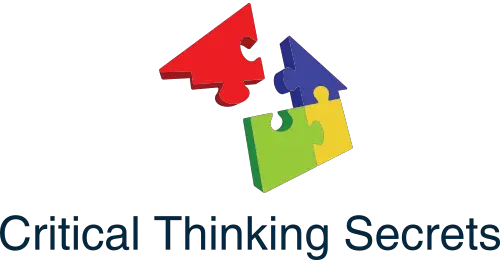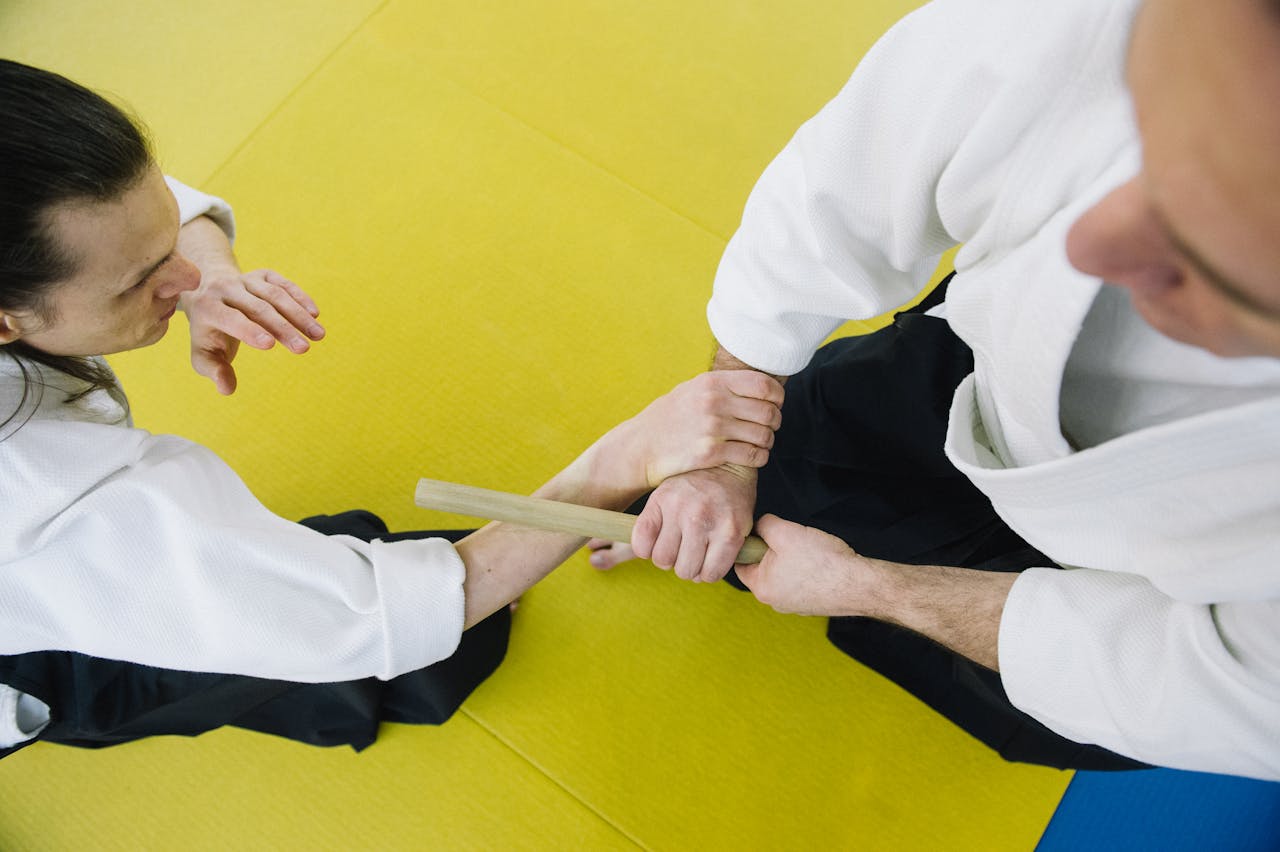Every day, people face situations that require more than basic knowledge.
Training for critical thinking helps people make better decisions, solve problems efficiently, and analyze information with more depth.
Whether at work, school, or home, strengthening this skill leads to clearer reasoning and better outcomes.

Developing critical thinking is not just about learning facts.
It means practicing how to ask good questions, check for evidence, and understand different viewpoints.
Many use online programs like those on Coursera or edX to build these abilities in a structured way.
Organizations and educators recognize the importance of these skills.
They include critical thinking in their training to prepare people for real-world challenges in classrooms and workplaces.
Key Takeaways
- Critical thinking training builds strong decision-making and problem-solving.
- Different methods and resources can help develop these skills over time.
- Both education and work settings benefit from a focus on critical thinking improvement.
Goals of Training for Critical Thinking

Training for critical thinking aims to sharpen the ability to examine information and make sense of complex topics.
It builds skills in analysis, independent thought, and making choices from clear evidence.
Enhancing Analytical Abilities
A key part of critical thinking is breaking complex problems into smaller, easier parts.
People use analysis to spot patterns, compare facts, and test ideas before making a decision.
This process requires asking the right questions and challenging first impressions or assumptions.
Practicing tasks like identifying causes and effects, summarizing data, or comparing arguments can improve analytical skills.
For example, students may look at both sides of a topic to find gaps or errors in the logic.
Employers value these skills because they help teams solve problems faster and with fewer mistakes.
Teaching students to recognize what they know and don’t know supports deep learning and intellectual humility.
Strong analysis makes it possible to separate opinions from facts, which is a basic need for effective critical thinking.
Some teaching resources provide guidance on building critical thinking and other higher order thinking skills.
Promoting Independent Reasoning
Critical thinking training encourages people to form their own judgments instead of copying others.
Independent reasoning means sifting through information, weighing different viewpoints, and reaching conclusions based on logic, not habit or peer pressure.
People who think independently notice errors, bias, or gaps in what they see and hear.
By practicing independent reasoning, they learn to trust their judgment and support their opinions with evidence.
This creates stronger, fairer arguments in both speaking and writing.
Students and workers who develop this skill defend their ideas, handle disagreement, and stay open to new information.
Independence in thought also builds confidence in making important life decisions.
Supporting Informed Decision-Making
Critical thinking training aims to improve how people make choices.
Informed decision-making depends on sorting facts, identifying possible outcomes, and selecting the best option based on clear evidence.
This is important in school, work, and daily life.
The process includes gathering information, checking if sources are trustworthy, and weighing risks and benefits.
Using critical thinking, people avoid quick decisions based on emotion or pressure.
They take time to understand all sides before finalizing their choice.
Organizations want staff who use these skills because sound choices lead to better results and fewer errors.
Decision-making becomes stronger when people challenge their own biases, ask questions, and make choices they can explain and support.
Training programs can help by teaching critical thinking skills and how to improve them.
Effective Methods for Critical Thinking Training
Targeted exercises and ongoing practice help people develop critical thinking skills.
Different teaching methods focus on reasoning, analysis, and collaboration.
Socratic Questioning Techniques
Socratic questioning uses carefully chosen questions to promote deeper analysis and reflection.
Instructors ask students to clarify their thinking, justify reasons, and examine the basis of their beliefs.
For example, questions like “What evidence supports your view?” or “Are there alternative explanations?” encourage learners to look at problems from several angles.
This method highlights thinking processes over memorizing facts.
People learn to find flaws in arguments and recognize their own biases.
Small group conversations using Socratic questions help learners build confidence in constructing and evaluating arguments.
Over time, these exercises improve the ability to reason and communicate clearly.
Key features:
- Promotes open-ended discussions
- Encourages reflection on assumptions
- Tests logic and evidence use
Instructors should guide the conversation with follow-up questions rather than giving answers directly.
This supports active learning and self-correction.
Problem-Based Learning Approaches
Problem-based learning (PBL) involves students tackling real-world problems in small groups.
Instead of passively absorbing information, they identify what they need to know, research independently, and apply what they learn to propose solutions.
Instructors act as facilitators to keep students focused and encourage them to question information sources.
PBL improves analytical skills by requiring students to break down complex problems and consider multiple perspectives.
They must justify their choices and adapt if their first solutions don’t work.
Teams practice making decisions based on evidence, not assumptions.
A typical PBL session might begin with a scenario such as managing a business crisis or solving an environmental issue.
Key skills developed:
- Information gathering
- Teamwork
- Decision-making under uncertainty
PBL prepares people for situations they are likely to face in their careers or everyday life.
Interactive Discussion Formats
Interactive discussion formats use structured group activities like debates, role-playing, or round-table discussions.
These methods encourage participants to voice opinions, defend their ideas, and respectfully challenge others.
Active engagement requires participants to process and respond to opposing viewpoints in real time.
Debates develop argumentation skills and require evidence to support claims.
Role-playing helps participants see issues from different perspectives and adapt their thinking.
Round-table discussions allow for collaborative problem-solving with feedback from peers.
These formats foster a supportive environment for practicing critical thinking.
For ideas on using these methods in teaching or training, the University of Connecticut provides practical examples.
Benefits:
- Improves speaking and listening skills
- Builds respect for different viewpoints
- Encourages clear, logical reasoning
Developing Critical Thinking in the Classroom
Teachers help students build critical thinking through clear curriculum choices and thoughtful feedback.
Specific classroom strategies make it easier for students to learn how to ask questions, solve problems, and think deeply about what they study.
Curriculum Design Strategies
A well-designed curriculum supports critical thinking by including lessons that go beyond memorizing facts.
Students work on projects, analyze case studies, and apply knowledge to real-world examples.
Project-based learning helps them investigate topics and develop their own ideas.
Teachers ask open-ended questions that do not have just one answer.
When students discuss their ideas and hear other views, they become curious and consider different sides.
Many educators use graphic organizers, group discussions, and debates in the classroom to prompt critical thinking.
Including diverse perspectives and materials also matters.
For example, students might read news articles from different viewpoints and compare what they find.
Classroom activities then become a space for careful thinking and deeper understanding.
Assessment and Feedback Methods
Assessment methods that support critical thinking focus on how students solve problems and explain their reasoning.
Instead of only using multiple-choice tests, teachers can use essays, presentations, or group projects as ways for students to show their thinking.
Teachers give constructive feedback by pointing out what students did well and where they can improve.
Feedback should encourage students to reflect and ask more questions.
Techniques like evaluative praise praise the student’s thinking process—not just the final answer—and help them get better over time.
Giving students chances to revise their work allows them to use feedback and improve their critical thinking skills with practice.
Integrating Critical Thinking in Professional Settings
Building strong critical thinking skills at work helps teams solve complex problems, make informed decisions, and adapt to change.
Structured programs and active practice improve how employees analyze issues and respond under pressure.
Corporate Training Programs
Many companies design formal training programs to improve critical thinking.
These programs often include case studies, group discussions, and real-life problem-solving exercises.
Employees learn to break down issues, question assumptions, and consider multiple perspectives.
Benefits of company-wide training:
- Increased productivity: Employees address challenges faster.
- Reduced mistakes: Workers check facts and evidence before acting.
- Better decision-making: Teams weigh options rather than react quickly.
For example, team members might work through a business scenario, practicing how to gather information and evaluate solutions.
Over time, these activities create a culture where thoughtful analysis is expected.
Some organizations use step-by-step frameworks like those in guides on building critical thinking skills at work to implement these practices.
Leadership Development Initiatives
Organizations use leadership programs to develop critical thinkers among managers and future leaders.
These initiatives often focus on teaching leaders to ask probing questions, identify biases, and communicate their thinking clearly.
Key elements include:
- Workshops: Leaders discuss real business problems and share different viewpoints.
- Mentoring: Senior staff coach others on how to examine facts and challenge opinions.
- Simulations: Role-plays allow leaders to test their reasoning in a safe space.
These efforts help leaders make better strategic choices and guide their teams with clarity.
Research shows that leaders trained in critical thinking adapt better during change and solve workplace problems more effectively.
Challenges in Critical Thinking Training
Common challenges in critical thinking training include mental shortcuts that lead to error, such as cognitive biases.
Making learning methods work for every individual can also be difficult.
Recognizing and addressing these obstacles helps learners become better thinkers in different situations.
Overcoming Cognitive Biases
Cognitive biases are patterns of thinking that make people notice, remember, or believe information in inaccurate ways. Confirmation bias is very common, where people only seek information that supports what they already believe.
This bias can prevent them from considering other ideas or facts. Other frequent biases include overconfidence bias, where someone believes their opinion is correct without enough proof.
Groupthink happens when people agree with a group instead of thinking for themselves. Cognitive dissonance makes it hard for someone to accept new information that challenges their beliefs.
You can reduce these problems by asking for feedback, checking facts from multiple sources, and slowing down before making decisions. Self-awareness and regular practice help improve critical thinking skills.
Adapting to Diverse Learning Styles
People learn in different ways, and training methods that suit one person may not help another. Some students do best with hands-on activities, while others prefer reading or listening to lessons.
If training does not match a person’s learning style, it becomes harder for them to build critical thinking skills. Teachers can use a mix of activities, such as group discussions, case studies, and role-playing.
A course that uses active learning strategies can help more learners stay engaged. Creating material with visuals, writing tasks, and practical exercises gives everyone a chance to develop their skills.
Allowing students to ask questions and discuss real-life problems also makes lessons more effective.
Evaluating Success in Critical Thinking Development
Assessing critical thinking growth requires both short-term and long-term analysis. It is important to look at measurable improvements and track how skills are used over time.
Measuring Outcomes and Progress
Teachers and trainers measure success in critical thinking through direct observation and practical tasks. Common strategies include assigning essays that require analysis, offering case studies, and using problem-based learning activities.
These tasks let students show skills like questioning, analyzing, interpreting, and making judgments about information. Multiple-choice tests and written reflections also help assess the student’s ability to apply critical thinking in different scenarios.
Educators use rubrics that focus on clarity, logic, and use of evidence when grading assignments. Progress can be monitored over time to see individual improvement.
Self-assessments let learners reflect on their own growth. Feedback from peers and instructors gives another perspective on development.
Some organizations follow step-by-step guides, such as these seven steps for critical thinking, to structure both teaching and assessment.
Long-Term Impact Assessment
Long-term impact is measured by looking at skill retention and practical use beyond the classroom. Researchers might follow up with students months or years later to see if they use critical thinking in new situations.
These situations can include different school subjects or real-world problems. Long-term studies may compare test results at different points during and after training.
Feedback from employers or future educators is sometimes collected to track performance in advanced studies or jobs. These methods help show if training leads to lasting benefits.
Research has found that critical thinking training can have a positive effect on academic achievement and skill development.
Resources for Training in Critical Thinking
There are many ways to build critical thinking skills. Learners can explore online courses, books, or practice activities to improve step by step.
Below is a simple table of resources that can help with critical thinking training:
| Resource Type | Description | Example Link |
|---|---|---|
| Online Courses | Structured classes with video lessons and quizzes | Coursera Critical Thinking Courses |
| Articles & Guides | Written materials and tips for learning at your own pace | Critical Thinking Articles Library |
| Skill-based Modules | Short lessons focused on specific skills or activities | Skillsoft Critical Thinking Courses |
| Training for Leaders | Programs designed for managers and teams | AMA Critical Thinking Skills Training |
Many colleges and universities also offer workshops and resource pages. For example, Louisiana State University provides critical thinking resources to guide both students and educators.
Learners can use online modules, lesson plans, or professional training to match their needs and experience. Using a mix of these resources often leads to steady progress and long-term skill development.
Frequently Asked Questions
Critical thinking training teaches people to ask questions, use evidence, and examine information before drawing conclusions. Many schools and workplaces use step-by-step programs and proven methods to help learners grow these skills.
What are the core components of a critical thinking training program?
A strong critical thinking program includes problem-solving, analysis, and evaluation. Training often uses real-world scenarios and encourages asking “why” and seeking evidence for answers.
Students learn to consider biases and draw logical conclusions.
How can one improve their critical thinking skills through online courses?
Online courses provide structured lessons and interactive exercises to help learners practice questioning and reasoning. Many programs offer feedback and support from instructors or peers.
Learning at your own pace is common, which makes it easier to fit into a busy schedule. Examples of these structured approaches can be found in resources like Skills for Study.
What are the stages of development in critical thinking?
Critical thinking skills tend to develop in stages. Learners start with basic understanding, then move to deeper analysis and independent thought.
Over time, people improve their ability to reason and make judgments based on evidence.
Which educational institutions offer the most reputable courses in critical thinking?
Many universities and colleges have well-respected critical thinking classes. Look for programs at community colleges, large universities, or online platforms tied to accredited schools.
Research which institutions have strong reputations in teaching or philosophy.
Can critical thinking be effectively taught in a workplace environment?
Yes, critical thinking can be developed at work. Training often uses real-world tasks, group discussions, and problem-solving activities.
Employers may ask staff to evaluate procedures or suggest improvements, helping employees grow these valuable skills. Asking “why” and giving evidence-based answers is often encouraged, as noted in Critical Thinking Co..
What methodologies are used to measure the effectiveness of critical thinking training?
Researchers often use assessments, observation, and self-reflection tools to measure effectiveness. Tests may ask participants to analyze information or find errors in reasoning.
Participants might also solve problems using evidence. Instructors and peers give feedback to help track progress.





